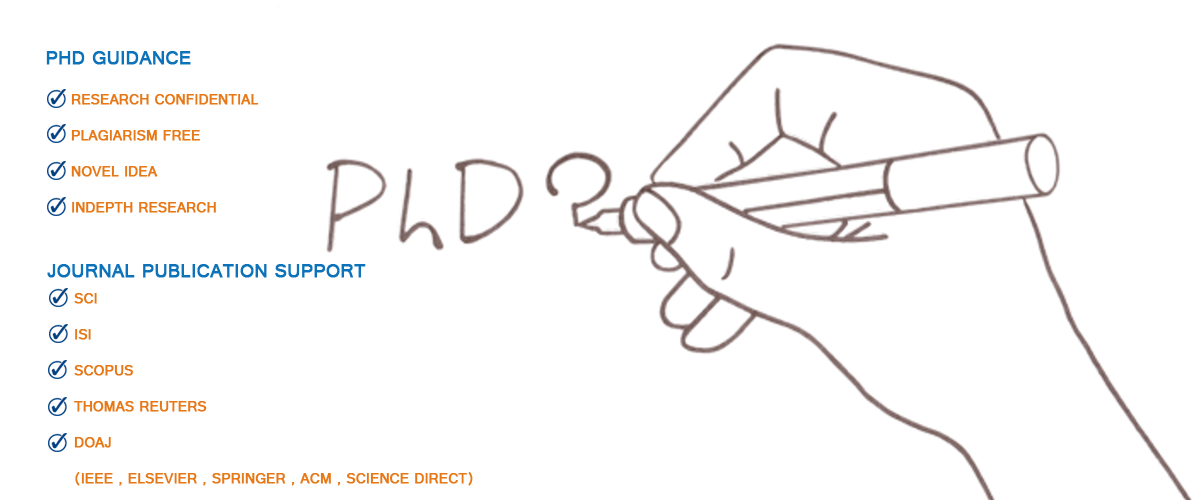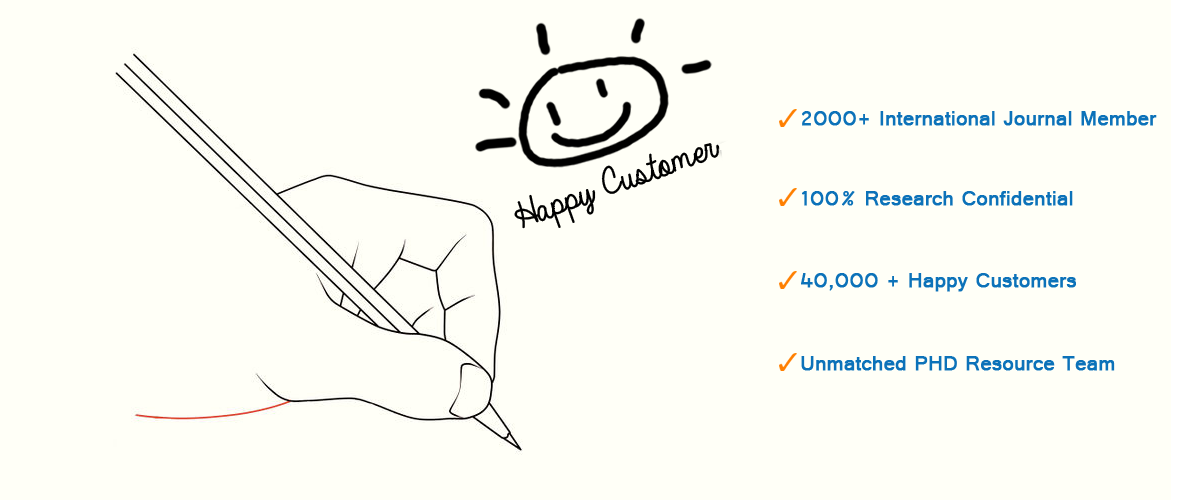Device to Device Communications is also shorty named D2D networks, which communicate by optimum pairing/device discovery. With an intention to move society to use advanced data transmission, D2D is introduced. Most importantly, it is advanced by means of a maximum network. This article is major highlights the new research trends of Device to Device Communication in LTE networks!!!
As a matter of fact, D2D is currently is incorporated with 4G / LTE technology. In particular, D2D Communication model powers the devices to share messages among themselves through secure communication protocol in LTE-Direct. Actually, this process is close to the interaction of devices and the base station.
What are the objectives of D2D LTE?
Below, we have mentioned the list of intentions of the D2D communication in the LTE network.
- Throughput
- System Capability
- D2D Rate and Total Rate
- Data Transmission Efficiency
- Channel Throughput
- Spectrum
- Spatial Spectrum
- Spectrum Consumption
- Spectrum Effectiveness
- Power
- Total Power Utilization
- Power Efficacy
- Overall Transmit Power
- System Energy Efficiency
- Others
- Utility of System
- Link Budget
- Quality of Service (QoS) and Incomes
- Delay and Interference
Next, we can see how the LTE D2D mechanisms are very adept with one another. Our research team has long-term practices in both basic and emerging technologies since we have applied them in many current research areas of LTE D2D communications. So, we are skillful in analyzing the technologies based on their characteristics.
Comparison of LTE D2D Technologies
- LTE direct in-band Device to Device
- Communication Coverage – < 500m
- Spectrum- Licensed
- Quality of Service (QoS) – Yes
- Users’ Price – Cost by operator
- Interference Management – Yes
- Discovery Operation – Services Distribution by Devices at physical layer
- Wi-Fi direct
- Communication Coverage – < 100m
- Spectrum- Unlicensed
- Quality of Service (QoS) – No
- Users’ Price – Free of Cost / Cost by operator
- Interference Management – No
- Discovery Operation – Asynchronous Message-based Discovery (Two-steps)
Overview of Device To Device Communication in LTE
In LTE D2D Communications, LTE devices are connected based on peer-to-peer relations without utilizing mobile infrastructure. Here, the devices are dedicatedly connected with their neighbouring devices (proximity).
In the middle of these LTE-A approaches, D2D has the ability to manage the network traffic and select optimal routes directly between the UEs. By the by, the data between 2 UEs need to pass through eNodeB to other key technologies.
How does device-to-device communication works in LTE?
Now, we can see how the D2D data transmission takes place in LTE-Advanced (LTE-A) networks. Essentially, LTE-A has distributed architecture that distributes multi-tier cells in coverage areas based on different characteristics. And they are processing ability, transmission power, backhaul bandwidth, geo-location, frequency band, etc. A base station (BS) only transfers the data among two user equipment (UE) in the existing cellular networks.
For instance: On using uplink resources, UE (A) transmits the data to BS. Then on using downlink resources, BS forwards the data to the respective UE (B). But in D2D, communication uses radio waves instead of BS for sharing data between devices.
And, it is a short-range communication to support high resource efficiency (Spectrum and Energy), low latency, and high throughput. So, it is recognized in many networking applications such as gaming, multimedia distribution, disaster warning, traffic load balancing, and more.
Overall, D2D is the communication mode to enable data transmission between two devices for emergency purposes in the LTE network. Here, the LTE devices can share the data without the presence of a base station. Here we have listed the basic types of Device to Device communication in LTE for more add-on information, which classify based on scenarios, RRM, and control.
In overall, D2D is the communication mode to enable the data transmission between two devices for emergency purposes in LTE network projects. Here, the LTE devices can share the data without the presence of base station. For more add-on information, here we have listed the basic types of D2D communication which classifies based on scenarios, RRM and control.
Classifications of D2D Communications
- Device-to-Device Scenario
- D2D Communication Category
- One-to-Many (D2MD)
- One-to-One (D2D)
- Coverage
- Out of coverage
- N-coverage
- Partial coverage
- Relaying
- Scaling up of coverage
- Improving capacity
- Scaling up of coverage / Improving capacity
- D2D Communication Area
- Different cell
- Same cell
- D2D Communication Category
- Device-to-Device RRM
- Classification of Interference
- From DUEs to DUEs
- From DUEs to CUEs
- From CUEs to DUEs
- Re-claimed resources by D2D
- Downlink
- Uplink
- Downlink and Uplink
- Mode of Communication
- Shared between DUEs
- Cellular
- Dedicated – Between DUEs and CUEs
- Classification of Interference
- Device-to-Device Management
- Discovery of D2D
- Control of Discovery – Autonomous and Network assisted
- Discovery Instigation – Posteriori and Priori
- Control of D2D
- Loose
- Hybrid
- Full
- Discovery of D2D
Research Issues of LTE D2D Communication
- Security: In LTE-D2D, it significantly impacts the network that turns to face authentication and authorization issues. Also, it requires the entire LTE network to extend its service in supporting device-to-device communication.
- Direct Communication: One more major problem is the direct interaction of devices for emergency purposes. Though direct communications data quickly, it is a very inconvenient approach in the time of emergency cases. Since it needs to request the neighboring devices one by one for emergency assistance. So, it becomes the research issue which looking for the best solutions.
Our research team has more practice and understanding in all major research perspectives of D2D communications, which ranges from D2D discovery to D2D real-time applications. For instance: DataSpotting, Relay-by-Smartphone, and FlashLinQ. Further, we also listed their key features, which help build the custom-based real-time LTE models.
Real-Time LTE Prototype Models for D2D Communication
- Relay-by-Smartphones
- Frequency Band- ISM band
- Platform – Android (smartphones)
- Peer Discovery Coverage- around 100 m
- Bit Rate, Hops Count and Radio Access – kbp/s, multi-hops and Wi-Fi ad-hoc
- D2D Discovery- infrastructure-less
- Design Need – For broadcasting emergency message in disaster
- FlashlinQ
- Frequency Band – dedicated cellular band
- Platform – TI DSP chipset TMS-C6482 XiLinx Virtex-4 FPGA
- Peer Discovery Coverage – 1 km
- Bit Rate, Hops Count and Radio Access – 1.5 mb/s, 1 hop and OFDMA
- D2D Discovery – autonomous with operator resistance
- Design Need – For scheduling maximal feasible group of connections in physical and MAC layer
- Data Spotting
- Frequency Band – ISM band (Data channel) and 3G spectrum (control channel)
- Platform – Android Nexus One
- Peer Discovery Coverage – 100 m
- Bit Rate, Hops Count and Radio Access – 300 kb/s to 2.5 mb/s, 1 hop and Wi-Fi ad-hoc
- D2D Discovery – operator based
- Design Need – For balancing the cellular traffic load in peak hours
So far, we have discussed the D2D, LTE D2D overview, technologies, classifications, working procedures, research issues, and real-time models. Now, our experts have shared few important areas of LTE D2D communication since these are collected based on the LTE D2D key operations for more research ideas. We have numerous research areas for supporting you in all respects of this field.
Significant concepts in LTE D2D communication
- Power Management
- Distributed
- Centralized
- Increasing Sum-Rate
- Decreasing Transmit-Power
- Interference Control
- Centralized and Distributed
- Spectrum Provisioning
- Distributed
- Spectrum and Energy efficient
- High Sum-Rate
- Centralized
- Maximization of Sum-rate
- QoS aware
- Energy and Spectrum efficient
- Distributed
- Selection of Mode
- Multi-cell with Multi-CUs
- Single-cell with Single-CU
- Single-cell with Multi-CUs
Next, we can see the gradually budding research areas in Device to Device Communication in LTE-A networks which are pinned below. These areas draw the attention of researchers interested individuals from academia and industry. Further, we are also currently in other extended areas of D2D LTE. If you need more areas for creative research notions, you can approach us.
Research Topics in D2D Communication LTE
- Network Interference Alignment and Control
- Network Security, Service and Discovery
- Optimal mode selection in D2D-LTE Communication
- Cooperative Device to Device communication in LTE
- Secure Sensitive Data Transmission in D2D
- Frequency Band Consumption Control
- Energy and Power-Aware D2D Services
- Optimal Relay Selection for Data Forwarding
- Efficient Resource Provisioning in Distributed Network
- Relay based D2D Communication Analysis
- Intelligent Route Selection for Fast D2D Transmission
Last but not least, we can see the simulation metrics used to evaluate the LTE D2D model since performance is the most important factor for any application. Our developers are intellectual to improve the following metrics to achieve the efficient result of the model.
Simulation Parameters for LTE D2D Communication
- Call Radius
- Cell Outline
- Network Coverage
- Enb Transmission Power
- UE Drop and Speed
- Frac. Of Legacy UEs indoor
- Evolved NodeB
- Transmit Power
- Carrier Frequency (GHz)
- D2D Pair Distance
- Uplink Bandwidth
- Antenna Type
- Path Loss Exponent
- D2D Pairs
- Monte-Carlo Simulation Runs
- Base Station Power Transmission
- Maximum D2D Pair Distance
- System Bandwidth (MHz) and Synchronization
- Noise Power (AWGN)
- Number of. Legacy UEs / macro cell
- Cellular Users (CU) and CU Transmit Power
- Frac.of Discovery UEs indoor
- Number of Discovery UEs / sector
Overall, we are offering different services for your Device Device Communication in LTE research. The services are area identification, topic selection, proposal writing, code development, paper writing, paper publication, and thesis/dissertation writing. So, make use of this chance to avail best services from one place by contacting us.









